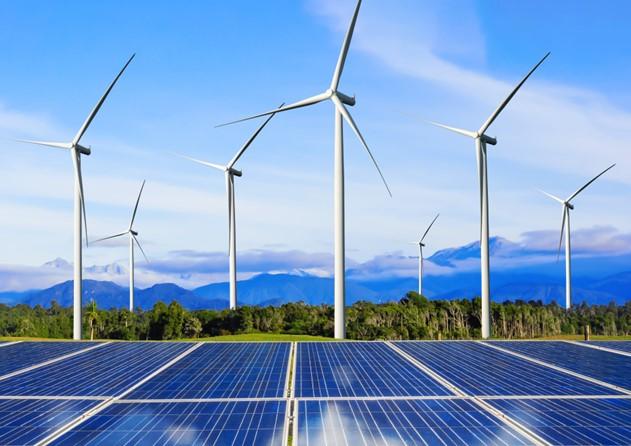Our Energy Law Briefing Special Edition provides an overview of the amendments to the classification of onshore wind and onshore photovoltaic projects under environmental licensing categories:
A. Introduction
B. Background
C. Changes Introduced by Classification Decision 2024
D. Transitional Provisions
E. Conclusion
F. Comparative Table of Classification Decisions Since 2020
A. Introduction
1. A new Ministerial Decision (Classification Decision 2024) entered into force on 3 July 20241 and amends the classification of onshore wind and photovoltaic (PV) projects under the environmental licensing Categories A (further split into Sub-Categories A1 and A2) and B.
2. Classification Decision 2024 has been introduced as the result of the Council of State annulment2 (the Annulment Decision) of the previous environmental classification Ministerial Decisions in so far as they relate to onshore wind and photovoltaic and hydro projects3 (the Annulled Classification Decisions)4.
B. Background
1. Projects classified under Sub-Categories A1 or A2, a decision by the competent public authority is required, approving the environmental terms (Environmental Permit). Category B Projects must apply to be subject to Standard Environmental Commitments and Projects not falling under any of these categories are exempt from environmental licensing.
2. The environmental classification of both onshore wind and PV projects depends on the following factors:
a. the installed capacity;
b. the length of the high-voltage overhead power line and the location of the project; and
c. if the project is located within a NATURA 2000 area or in a coastal area less than 100m from the shoreline.
C. Changes Introduced by Classification Decision 2024
1. Classification Decision 2024 has introduced various changes to the classification of projects.
2. Onshore Wind Projects: Based on Classification Decision 2024, onshore wind projects are classified under Categories A1, A2 and B as follows:
Projects falling under Category A1: Projects
a. with installed capacity of more than 50 MW; or
b. with installed capacity of more than 35 MW, if the project is located within a NATURA 2000 area or in a coastal area less than 100m from the shoreline; or
c. where the length of the overhead high voltage (≥150kV) interconnecting power line is equal to or longer than 20 km.
Projects falling under Category A2: Projects
a. with installed capacity of more than 5 MW and less than or equal to 50 MW, regardless of the number of wind turbine generators and with an overhead high-voltage (≥150 kV) power line length of less than 20 km; or
b. with installed capacity of more than 8 MW and less than or equal to 50 MW, with one wind turbine and with an overhead high voltage (≥150kV) interconnecting power line length of less than 20 km; or
c. with installed capacity of more than 5 MW and less than or equal to 35 MW and with an overhead high voltage (≥150kV) interconnecting power line length of less than 20 km, if the project is located within a NATURA 2000 area or in a coastal area less than 100m from the shoreline.
Projects falling under Category B: Projects
a. with installed capacity of more than 0.05 MW and less than or equal to 5 MW, regardless of the number of wind turbine generators; or
b. with installed capacity of more than 5 MW and less than or equal to 8 MW, with one wind turbine; or
c. with installed capacity of less than or equal to 0.05 MW, if the project is located within a NATURA 2000 area or in a coastal area less than 100m from the shoreline.
3. Onshore PV Projects: Based on Classification Decision 2024, onshore PV projects are classified under Categories A1, A2 and B as follows:
1. Projects falling under Category A1: Projects
a. with installed capacity of more than 50 MW; or
b. with installed capacity of more than 35 MW, if the project is located within a NATURA 2000 area or in a coastal area less than 100m from the shoreline; or
c. where the length of the overhead high voltage (≥150kV) interconnecting power line is equal to or longer than 20 km.
Projects falling under Category A2: Projects
a. with installed capacity of more than 5 MW and less than or equal to 50 MW, with an overhead high voltage (≥150kV) interconnecting power line length of less than 20 km; or
b. with installed capacity of more than 5 MW and less than or equal to 35 MW and with an overhead high voltage (≥150kV) interconnecting power line length of more than or eq equal to 20 km, if the project is located within a NATURA 2000 area or in a coastal area less than 100m from the shoreline.
Projects falling under Category B: Projects
a. with installed capacity of more than 1 MW and less than or equal to 5 MW; or
b. with installed capacity of less than or equal to 1 MW, if the project is located within a NATURA 2000 area or in a coastal area less than 100m from the shoreline.
D. Transitional Provisions
1. Classification Decision 2024 includes various transitional provisions for projects with existing environmental licensing or which have submitted for environmental licensing before 3 July 2024.
2. As a general rule, the environmental licensing of projects already in existence and based on the previous legislative framework, remains valid irrespective of whether Classification Decision 2024 results in a change in their classification.
3. The previous legislative framework applies to projects which have been submitted for environmental licensing by way of:
a. an Environmental Impact Study (EIS) for the issuance of the Environmental Permit or an amended EIS for the renewal or amendment of the Environmental Permit; or
b. an application for the Standard Environmental Commitments,
prior to 3 July 2024, and irrespective of whether a different classification now applies in accordance with Classification Decision 2024. Project developers may however choose to apply Classification Decision 2024.
4. In cases where a Category B project has been reclassified as a Category A1 or A2 project pursuant to Classification Decision 2024, any further amendments to the characteristics of the project will trigger the obligation to repeat the licensing procedure for the whole project. In these cases, the project’s Standard Environmental Commitments remain in force until the issuance of the Environmental Permit.
5. In cases of projects licensed under Category B based on the Annulled Classification Decisions which have been reclassified as Category A1 or A2 projects pursuant to Classification Decision 2024, the licensing procedure must be repeated before 3 July 2026 in accordance with the provisions applicable to Category A1 and A2 Projects.
6. For projects previously licensed under Categories A1 or A2 which have been reclassified as Category B projects pursuant to Classification Decision 2024, the Environmental Permit and the EIS dossier and relevant administrative opinions, must be submitted to the competent authorities for the project to be subject to Standard Environmental Commitments.
E. Conclusion
1. Classification Decision 2024 introduces a stricter environmental classification for onshore wind and PV projects. Projects previously classified under Category B between 2020-23 may now be classified under Categories A1 or A2, depending on their installed capacity and other factors, and will therefore be required to repeat their licensing under more cumbersome conditions before 3 July 2026. Onshore PV projects with installed capacity lower than 1MW continue to be exempted from environmental licensing as was previously the case.
2. The reasoning behind the Council of State’s annulment of the previous classification of onshore wind and PV and hydro projects is that the Annulled Classification Decisions introduced a more lenient classification regime than the original regime introduced in 2016 and was not properly justified by the Ministry of Environment and Energy.
3. It remains to be seen whether Classification Decision 2024 will be challenged before the Council of State and, if it is, whether the Council of State will consider that the justification on which it was based is sufficient and in compliance with the Annulment Decision.
F. Comparative Table of Classification Decisions Since 2020
| CATEGORY A1 | CATEGORY A2 | CATEGORY B | ||||||
TECHNOLOGY | Annulled Decision 2020 | Annulled Decision 2022 | Classification Decision 2024 | Annulled Decision 2020 | Annulled Decision 2022 | Classification Decision 2024 | Annulled Decision 2020 | Annulled Decision 2022 | Classification Decision 2024 |
ONSHORE WIND | P > 60 or,
P > 45 and Ξ or,
L ≥ 20 | P > 45 or,
P > 35 and Ξ or,
L ≥ 20 | P > 50 or,
P > 35 and Ξ or,
L ≥ 20 | 10 < P ≤ 60 and L < 20 | 6.5 < P ≤ 45 and L < 20 | 5 < P ≤ 50 irrespective of Ν and L < 20 or,
8 < P ≤ 50 and N=1 and L < 20 or,
5 < P ≤ 35 and Ξ, and L < 20 | 0.02 < P ≤ 10 or, P ≤ 0.02 and Ξ | 0.02 < P ≤ 6.5 or, P ≤ 0.02 and Ξ | 0.05< P ≤ 5 irrespective of Ν or,
5 < P ≤ 8 and N=1 or,
P ≤ 0.05 and Ξ |
ONSHORE PV | - | P ≥ 200 or,
L ≥ 20 | P > 50 or,
P > 35 and Ξ or,
L ≥ 20 | P > 10 | 10 < P < 200 and L < 20 | 5 < P ≤ 50 and L < 20 or,
5 < P ≤ 35 and Ξ, and L ≥ 20 | 1 < P ≤ 10 or,
P ≤ 1 and Ξ | 1 < P ≤ 10 or,
P ≤ 1 and Ξ | 1 < P ≤ 5 or,
P ≤ 1 and |
P: installed capacity in MW.
L: length of overhead high voltage (≥150kV) interconnecting power line in km.
N: number of wind turbine generators.
Ξ: the project is located within a Natura 2000 area or in a coastal area less than 100m from the shoreline.
1 under No. ΥΠΕΝ/ΔΙΠΑ/63951/4418/2024 (Government Gazette B’ 3867).
2 by way of decision under No. 1885/2023.
3 under No. ΥΠΕΝ/ΔΙΠΑ/74463/4562/2020 (Government Gazette B’ 3291) and No. ΥΠΕΝ/ΔΙΠΑ/17185/1069/2022 (Government Gazette B’ 841).
4 Annulled Decision 2020 (06.08.20) and Annulled Decision 2022 (24.02.22).





